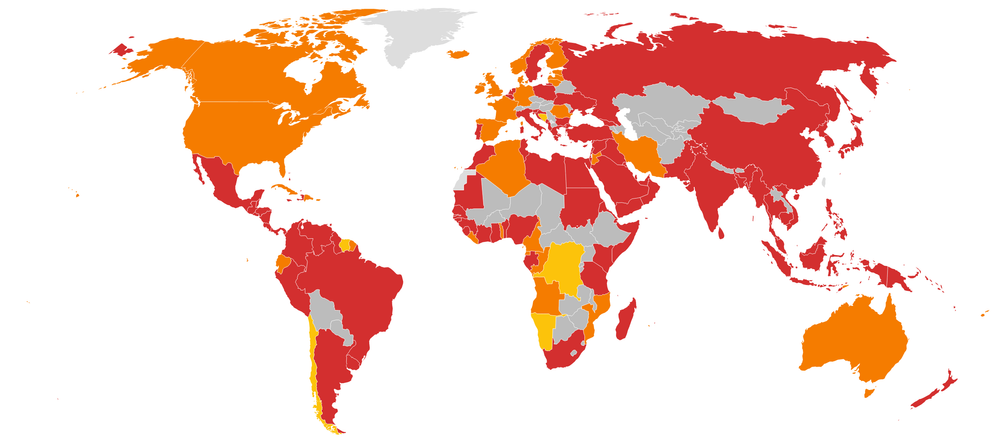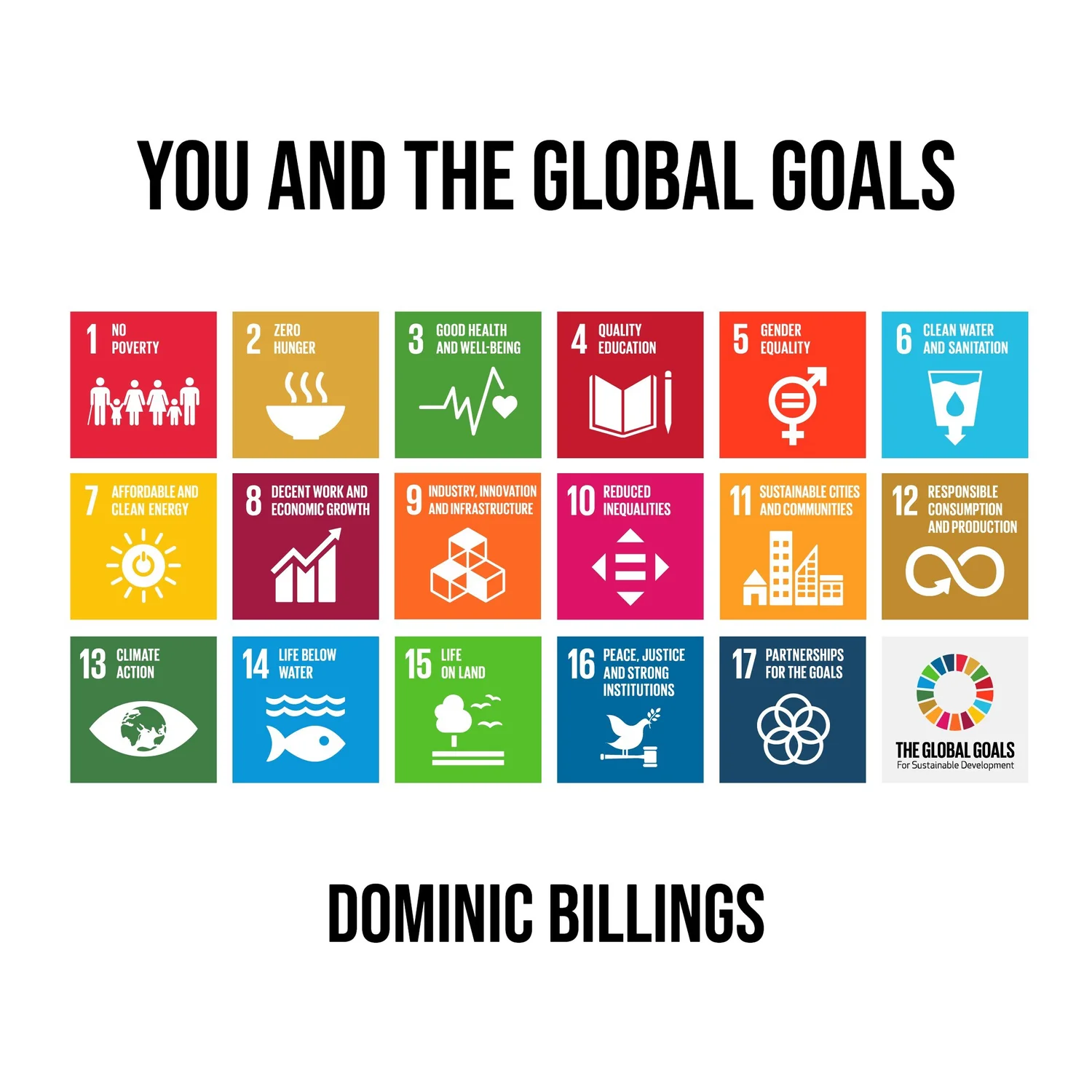SDG #14 - Life Below Water
Description
sqs-block-image-figure
intrinsic
">
</figure>
<figure class="
sqs-block-image-figure
intrinsic
">

<figcaption class="image-caption-wrapper">
Dashboard map for 2022 SDG Index Goal #14 ratings. Data source: sdgindex.org
</figcaption>
</figure>
Mean area protected in marine sites important to biodiversity (%)
Goals #14 & #15 are the biodiversity goals. We’re amid a crisis of enormous magnitude when it comes to mass species extinction, and we’re in a real pickle with oceans and seas, or pickle juice, to be more apt.
The 2022 SDG Index results for this Goal and first indicator, see many countries scoring red. Protected marine areas are the marine equivalent to national parks. Their existence means we get to preserve habitats of species crucial in Key Biodiversity Areas, which shelter the greatest concentrations of biodiversity. Protected marine areas allow marine life to catch its breath, a chance to regenerate from what humanity has subjected it to, crucial to the future health of life on this planet. I’ll expand more on the importance of protected areas in the following chapter, which mirrors Goal #14 except for terrestrial and freshwater life, rather than marine life. Marine protected areas include saltwater environments, whether in the seas and oceans, or in estuaries where the water is brackish, home to ecosystems of myriad species of plants, animals, and all kinds of organisms.
Humans have a propensity to view nature through the prism of the resources it can offer us. Though since industrialisation, we're yet to account for sustainability, paying far too little attention to conserving nature. Ecosystems can offer us plentiful services, but with this comes the responsibility to act with sustainability and reverence. Extraction of natural resources can be quite ugly, and we ought to give pause to our attitudes of how we treat the environment offering its services.
If we shun such protection, we know the risks: greater ocean acidification due to oceans absorbing carbon dioxide and other greenhouse gases. We know what happens when petrochemicals or petroleum spill or leak into marine environments. Even tourism can degrade environments unless managed.
None of us can declare a legal marine protected area in an area important to biodiversity, thus our sole route is to advocate for protected areas to the government.
Summary: Contact your government representative overseeing marine protected areas in your country or region, requesting the government protect 100% of marine Key Biodiversity Areas.
Ocean Health Index: Clean Waters score (worst 0-100 best)
The Clean Waters score is one component of the broader Ocean Health Index, measuring within each country’s maritime jurisdiction the level of contamination from four categories of pollution:
chemicals (oil or toxic spills from maritime vessels; agricultural pesticide/herbicide runoff)
nutrients (agricultural fertilisers)
pathogens (untreated sewage; livestock waste)
trash
The highest score for the Clean Water goal is 100, with 0 being the poorest result. What can you get right as an individual to improve your country’s score in the Clean Waters goal of the Ocean Health Index? How can you help achieve the 2030 aim of a score of 100 for the goal?
It is doubtful readers will be spilling oil into marine environments. But what about our demand for commercial shipping, and our consumption of goods produced and transported using a global supply chain? This creates opportunities to release chemical effluent in ports and shipping traffic. In this sense, you can reconsider any imported goods you’re demanding which require shipping. Yet it can be difficult to consider what all the inputs are going into a final product. You might buy a packet of biscuits from the supermarket, manufactured in your country, but with some of the ingredients imported, and what is the source of the packaging?
As we’ve seen, fertilisers, pesticides and herbicides used in agriculture can find their way into the marine environment. You can think about the foods you buy, and consider whether organic or another sustainable alternative may be worth considering. It’s also possible for chemicals from urban environments to find their way into the seas, therefore worth thinking about how you handle chemicals.
Where negligible wastewater treatment facilities exist, this means viruses and bacteria from sewage can make their way back into the water cycle in which marine life abodes and people swim.
You’ve got a broad sense of how perilous the state of water quality is for much of the world due to human activity. Please consider how your actions may drive some of the above instances where you can place pressure upon the health of oceans.
Summary: For readers in countries off-track, keep water clean via avoiding being responsible for the release of the above four pollutants, aiming for the best score in the Ocean Health Index’s Clean Water goal.
Fish caught from overexploited or collapsed stocks (% of total catch)
This indicator measures those species within an EEZ classified as overexploited or collapsed, with a 2030 aim to catch 0% of fish from overexploited or collapsed fish stocks. Estonia scores highest, with only 1% of its fish caught from overfished stocks.
Fish populations are declining as humans overfish, depleting a resource, as humanity is wont to do. This also has knock-on effects on the surrounding marine environment, placing at risk species to become threatened with extinction. Such stocks are harvested for commercial fishing, including apex predators like threatened shark species, and invertebrates like coral, sponges, and shrimp. This risks a ‘regime shift’ within an ecosystem, when a complex system alters due to the collapse of a species’ stock, with far-ranging ramifications beyond the ecosystem. A destructive pattern of subsidising fishing compounds trends leading to overfishing, leaving such regions afflicted for decades.
Aquaculture - in contrast to wild fisheries - is a step toward sustainable fishery. But would you like to be trapped in a net, a web of nylon between you and unlimited oceans? Picture yourself trapped, deprived of exploring such oceans, swimming cheek-by-jowl with your brethren, in a tumultuous soup of each other's excrement.
We’re served by taking a step beyond aiming for a sustainable fishery to instead avoid seafood altogether, based on an ethic of veganism. You could also use the source of this indicator, the Environmental Performance Index, to identify overexploited and collapsed species of fish in your country’s EEZ, and instead avoid these species from your consumptive habits.
Summary:
plant-based diet
end the catch of fish from overexploited or collapsed stocks by 2030
Fish caught by trawling and dredging (%)
The 2030 aim for this indicator is to catch 1% or less of fish by trawling and dredging. Some trawler nets on commercial fishing vessels are the size of a gridiron field. Is this a level playing field with our prey? Dredging drags the surface of the sea floor, excavating the floor itself, plus all the superfluous fish it catches.
I





